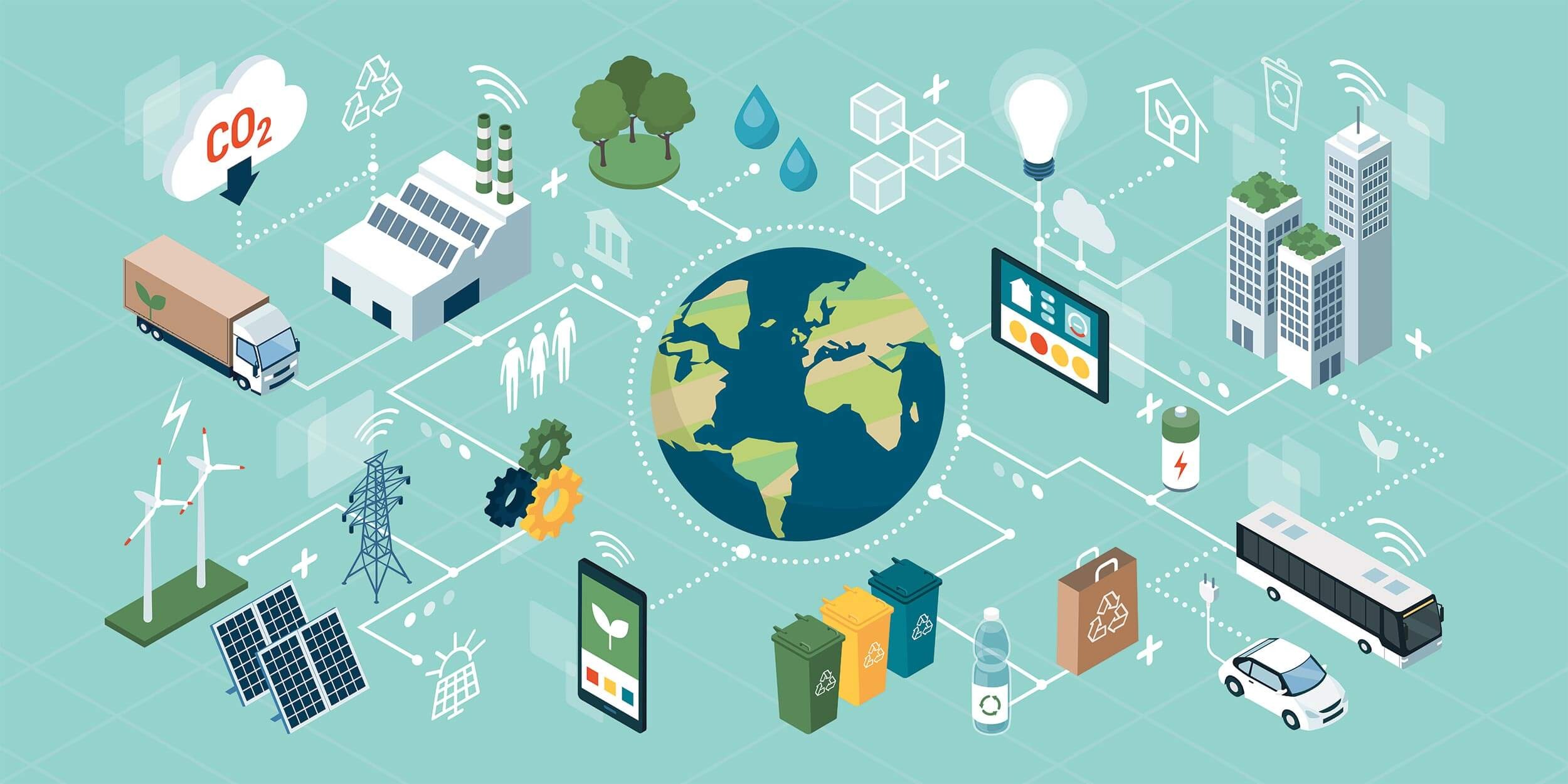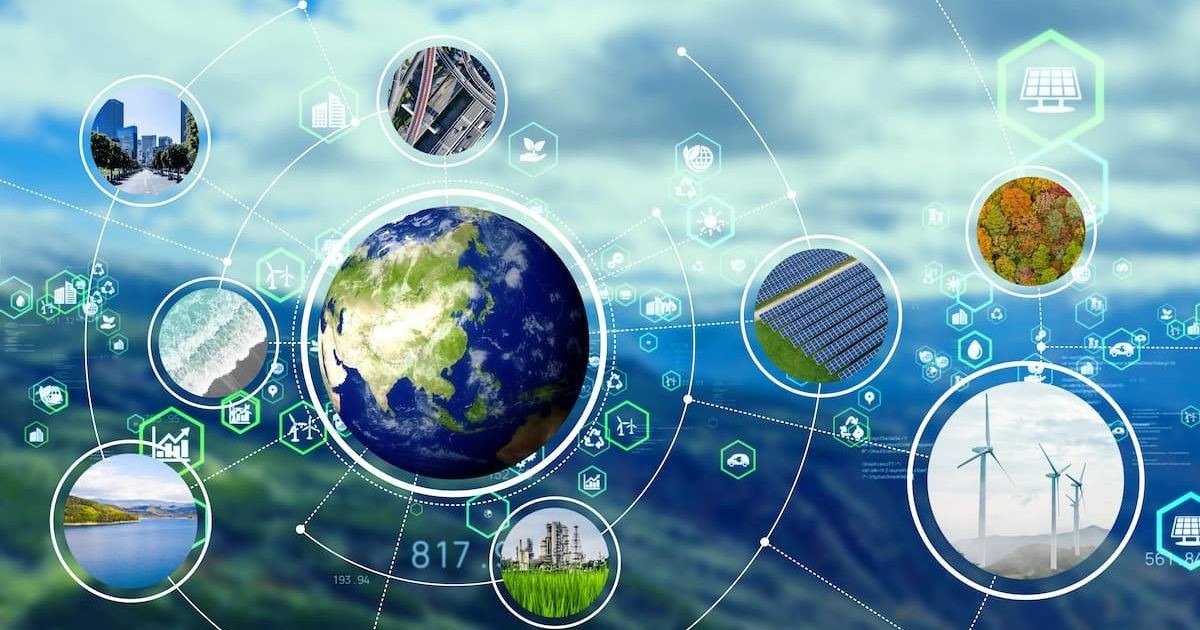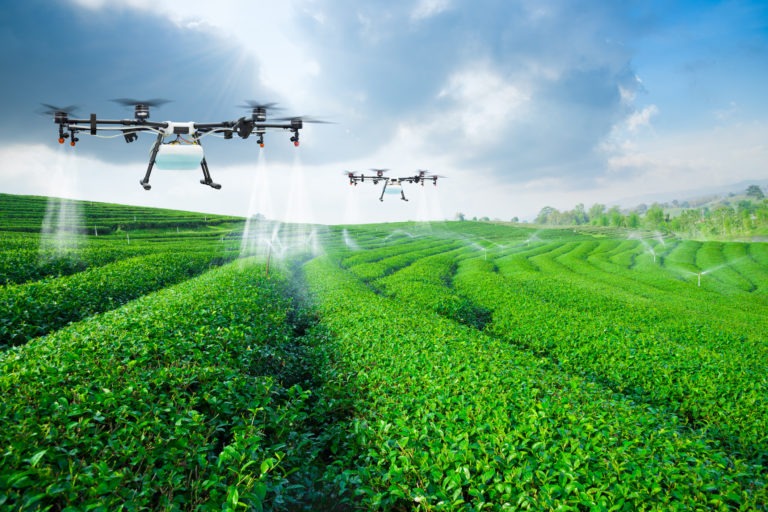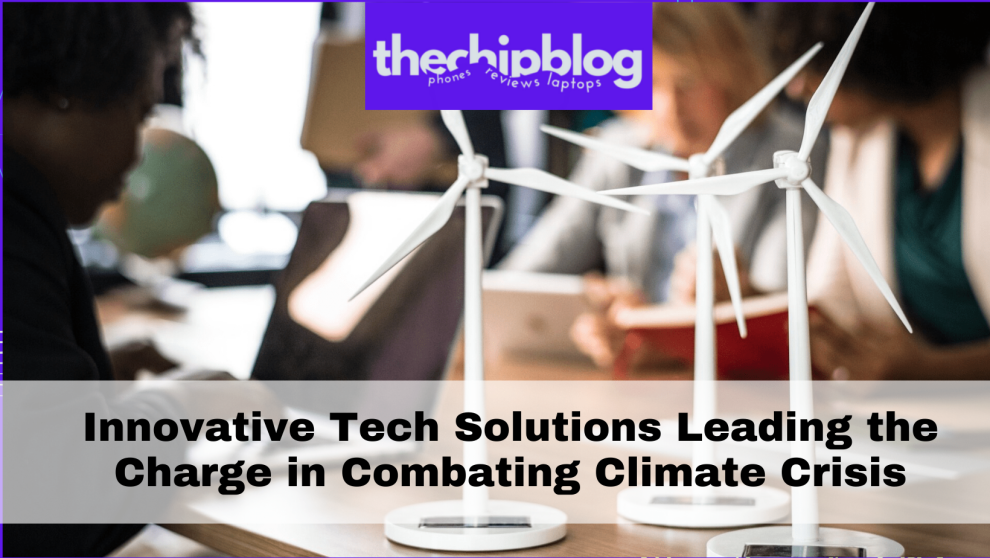In our collective pursuit of a sustainable future, the urgency to mitigate the devastating impacts of climate change has never been more pressing. As the global community grapples with the escalating consequences of rising temperatures, environmental degradation, and dwindling natural resources, a transformative shift towards eco-friendly technologies has emerged as a beacon of hope. Harnessing the power of human ingenuity and technological advancements, a myriad of innovative solutions are paving the way for a greener, more resilient planet.
What are the Most Promising Tech Solutions for Climate Change Mitigation?

From cutting-edge renewable energy systems to carbon capture and storage technologies, the realm of “tech solutions for climate change mitigation” is brimming with groundbreaking advancements. These cutting-edge innovations not only hold the potential to reduce our carbon footprint but also offer a path towards a more sustainable and equitable future for generations to come.
How Can Renewable Energy Technologies Help Mitigate Climate Change?
Renewable energy technologies, such as solar, wind, and hydroelectric power, are at the forefront of the battle against climate change. By harnessing the abundant and inexhaustible sources of energy from the sun, wind, and water, these technologies offer a clean and sustainable alternative to fossil fuels, which have long been the primary culprits behind greenhouse gas emissions and global warming.
The rapid development and widespread adoption of renewable energy sources have been nothing short of remarkable. Solar panel technology, for instance, has witnessed a remarkable surge in efficiency and affordability, making it an increasingly viable option for residential, commercial, and utility-scale applications. Similarly, wind turbines have undergone significant advancements, with larger and more efficient models capable of capturing greater amounts of wind energy.
How Can Smart Grid and Energy Storage Systems Contribute to Climate Change Mitigation?

Complementing the growth of renewable energy sources are the advancements in smart grid and energy storage systems. Smart grids, which utilize advanced communication and control technologies, allow for the efficient distribution and management of electricity generated from various sources, including renewables. By seamlessly integrating these diverse energy sources into a unified system, smart grids ensure a reliable and resilient power supply while minimizing waste and optimizing energy usage.
Moreover, energy storage technologies, such as batteries and flywheels, play a crucial role in addressing the intermittency challenges associated with renewable energy sources like solar and wind. By storing excess energy during periods of abundance, these systems can provide a consistent and reliable supply of electricity, even when the sun isn’t shining or the wind isn’t blowing.
What Role Can Carbon Capture and Storage Technologies Play in Climate Change Mitigation?
While the transition towards renewable energy sources is crucial, it is equally important to address the existing greenhouse gas emissions from various industrial processes and fossil fuel-based power plants. This is where carbon capture and storage (CCS) technologies come into play, offering a viable solution for mitigating the impact of these emissions on the environment.
CCS technologies work by capturing carbon dioxide (CO2) emissions from sources such as power plants, industrial facilities, and even directly from the air. The captured CO2 is then transported and securely stored underground in geological formations, such as depleted oil and gas reservoirs or deep saline aquifers, effectively preventing it from entering the atmosphere and contributing to global warming.
How Can Precision Agriculture and Smart Farming Help Mitigate Climate Change?

Agriculture, a vital sector for sustaining human life, is also a significant contributor to greenhouse gas emissions and environmental degradation. However, the integration of innovative technologies in the field of precision agriculture and smart farming offers promising solutions for mitigating the sector’s impact on climate change.
Precision agriculture employs a range of advanced technologies, including GPS systems, remote sensing, and data analytics, to optimize farming practices and resource utilization. By precisely targeting areas that require inputs such as water, fertilizers, and pesticides, precision agriculture minimizes waste and reduces the environmental footprint associated with traditional farming methods.
Furthermore, smart farming techniques, such as vertical farming and controlled-environment agriculture, enable the efficient and sustainable production of crops in urban and resource-constrained areas. These practices not only reduce the need for extensive land use and long-distance transportation but also offer opportunities for year-round crop production, contributing to food security and reducing greenhouse gas emissions associated with traditional agricultural practices.
How Can Green Building Technologies Help Mitigate Climate Change?
The built environment, encompassing residential, commercial, and industrial structures, accounts for a significant portion of global energy consumption and greenhouse gas emissions. Fortunately, the emergence of green building technologies offers a multitude of solutions for mitigating the environmental impact of the construction and operation of these structures.
Green building technologies encompass a wide range of innovative practices and materials, including energy-efficient heating, ventilation, and air conditioning (HVAC) systems, advanced insulation materials, and smart building automation systems. These technologies not only reduce energy consumption and associated emissions but also improve indoor air quality and occupant comfort.
Furthermore, the integration of renewable energy sources, such as solar panels and small-scale wind turbines, into building designs enables on-site energy generation, further reducing the reliance on grid-supplied electricity and minimizing the carbon footprint of these structures.
What Role Can Sustainable Transportation Technologies Play in Mitigating Climate Change?
The transportation sector, which includes personal vehicles, commercial fleets, and public transportation systems, is a significant contributor to global greenhouse gas emissions. However, the advent of sustainable transportation technologies offers promising solutions for reducing these emissions and promoting a more environmentally friendly mobility landscape.
Electric vehicles (EVs), powered by rechargeable batteries or fuel cells, have emerged as a game-changer in the quest for sustainable transportation. By eliminating tailpipe emissions, EVs offer a cleaner alternative to traditional gasoline or diesel-powered vehicles, significantly reducing the carbon footprint associated with personal and commercial transportation.
Moreover, the development of advanced battery technologies, coupled with the expansion of charging infrastructure, is addressing the range anxiety and accessibility concerns associated with EVs, making them an increasingly viable option for consumers and businesses alike.
Beyond EVs, advancements in hydrogen fuel cell technology, biofuels, and public transportation systems, such as electrified rail and bus networks, further contribute to the mitigation of transportation-related emissions and the transition towards a more sustainable mobility future.
How Can Emerging Technologies Like AI and IoT Support Climate Change Mitigation Efforts?
The role of emerging technologies, such as artificial intelligence (AI) and the Internet of Things (IoT), in climate change mitigation efforts cannot be overstated. These cutting-edge technologies offer innovative solutions for optimizing energy consumption, improving resource efficiency, and enabling data-driven decision-making across various sectors.
AI algorithms can analyze vast amounts of data to identify patterns, optimize processes, and provide valuable insights for reducing energy consumption and minimizing waste. For instance, AI-powered predictive maintenance systems can anticipate equipment failures and schedule preventative maintenance, reducing downtime and unnecessary energy consumption.
Additionally, the Internet of Things (IoT) enables the seamless integration and communication of various devices, sensors, and systems, creating a network of interconnected devices that can collect and exchange data in real-time. This data can be leveraged to optimize processes, monitor resource usage, and identify areas for improvement, ultimately contributing to more sustainable and eco-friendly practices across industries.
How Can Emerging Technologies Like Blockchain Support Climate Change Mitigation Efforts?
While not a direct technological solution for climate change mitigation, blockchain technology holds promising implications for supporting and enabling sustainable practices. Blockchain’s decentralized and transparent nature offers opportunities for tracking and verifying the origin and lifecycle of products, enabling better accountability and transparency in supply chain management.
For instance, blockchain-based systems can be used to track the carbon footprint of products from sourcing to distribution, allowing consumers and businesses to make informed decisions and incentivize sustainable practices. Additionally, blockchain-enabled energy trading platforms can facilitate the exchange of renewable energy credits, promoting the growth of clean energy sources and encouraging investment in sustainable energy projects.
Furthermore, blockchain’s inherent security and immutability features can be leveraged to ensure the integrity and authenticity of data related to carbon emissions, environmental impact assessments, and sustainability reporting, fostering trust and accountability among stakeholders.
How Can Public-Private Partnerships and Collaborative Efforts Support the Adoption of Tech Solutions for Climate Change Mitigation?
The successful adoption and widespread implementation of tech solutions for climate change mitigation require concerted efforts and collaboration among various stakeholders, including governments, private sector organizations, research institutions, and civil society groups.
Public-private partnerships (PPPs) play a crucial role in driving innovation, facilitating knowledge sharing, and promoting the adoption of sustainable technologies. By leveraging the resources, expertise, and capabilities of both public and private entities, PPPs can accelerate research and development, support pilot projects, and foster an enabling environment for the deployment of climate change mitigation technologies.
Collaborative efforts among researchers, scientists, and industry experts are also essential for advancing technological solutions and addressing the multifaceted challenges posed by climate change. Cross-disciplinary collaborations can lead to breakthroughs and synergies, combining expertise from various fields such as engineering, environmental science, economics, and policy-making.

Moreover, engaging with local communities and civil society organizations can help ensure that the development and implementation of tech solutions for climate change mitigation are inclusive, equitable, and aligned with the needs and priorities of diverse stakeholders.
By fostering a culture of collaboration, knowledge-sharing, and collective action, we can unlock the full potential of technological innovations and accelerate the transition towards a more sustainable and resilient future.
In the face of the daunting challenge posed by climate change, the development and widespread adoption of tech solutions for climate change mitigation offer a beacon of hope for a greener, more sustainable future. From renewable energy technologies to carbon capture and storage systems, precision agriculture, and sustainable transportation solutions, these innovations are paving the way for a transformative shift towards a low-carbon economy.
However, the successful implementation of these tech solutions requires a multifaceted approach, involving collaboration among various stakeholders, supportive policies and regulations, and a sustained commitment to research and development. By harnessing the power of human ingenuity and technological advancements, we can create a more resilient and equitable future for generations to come, safeguarding our planet and ensuring a prosperous tomorrow.
















Add Comment